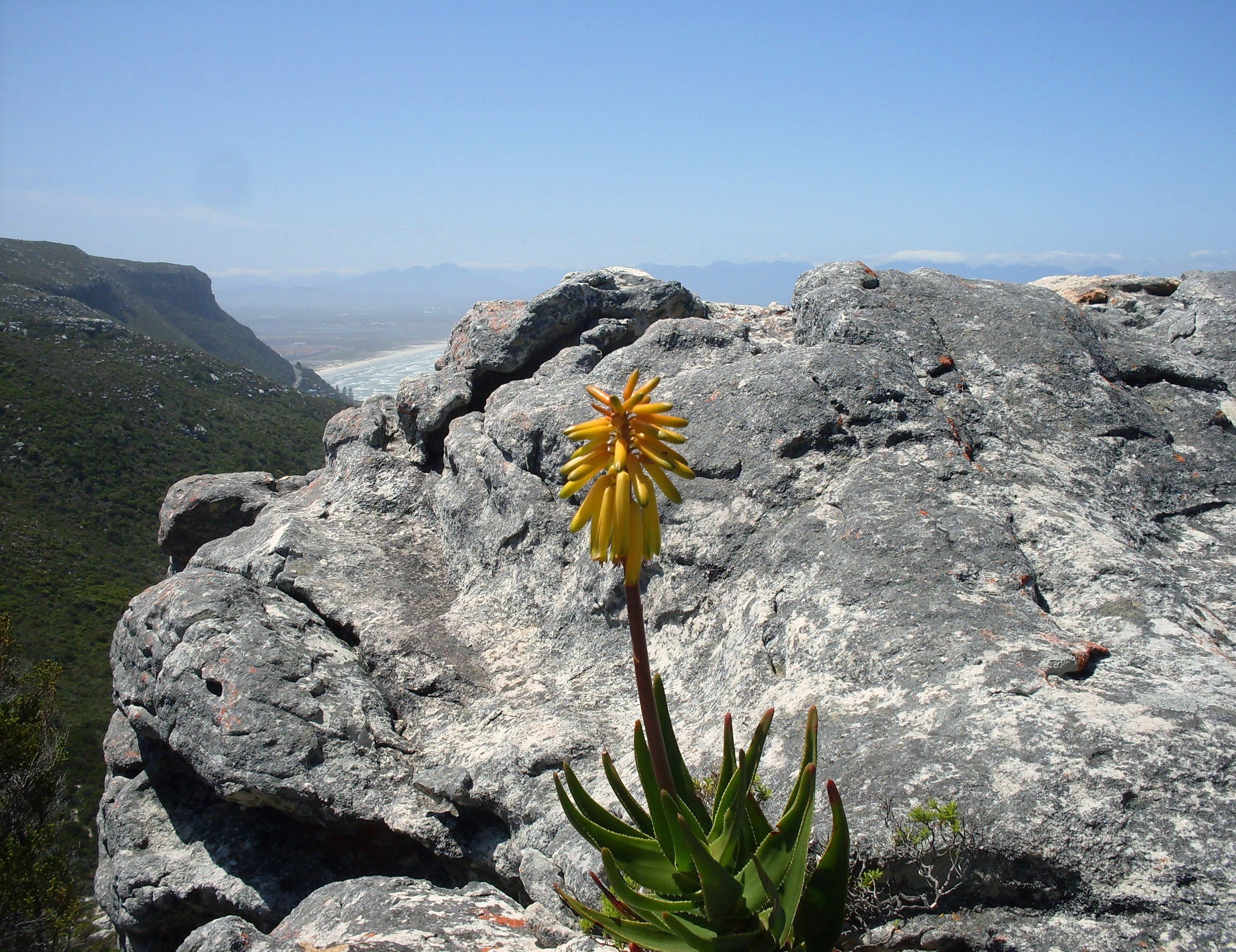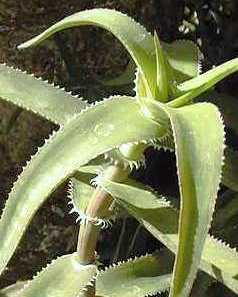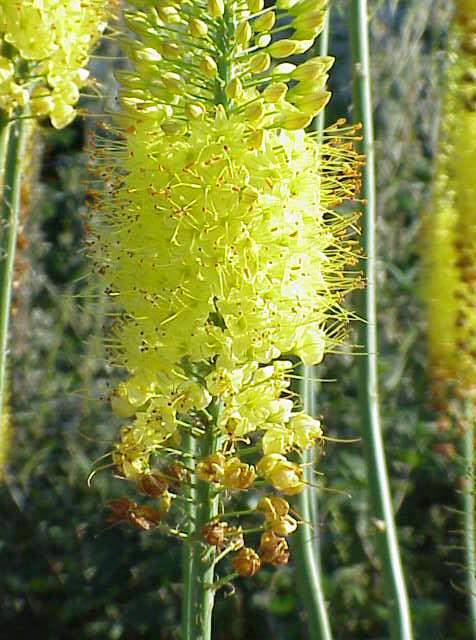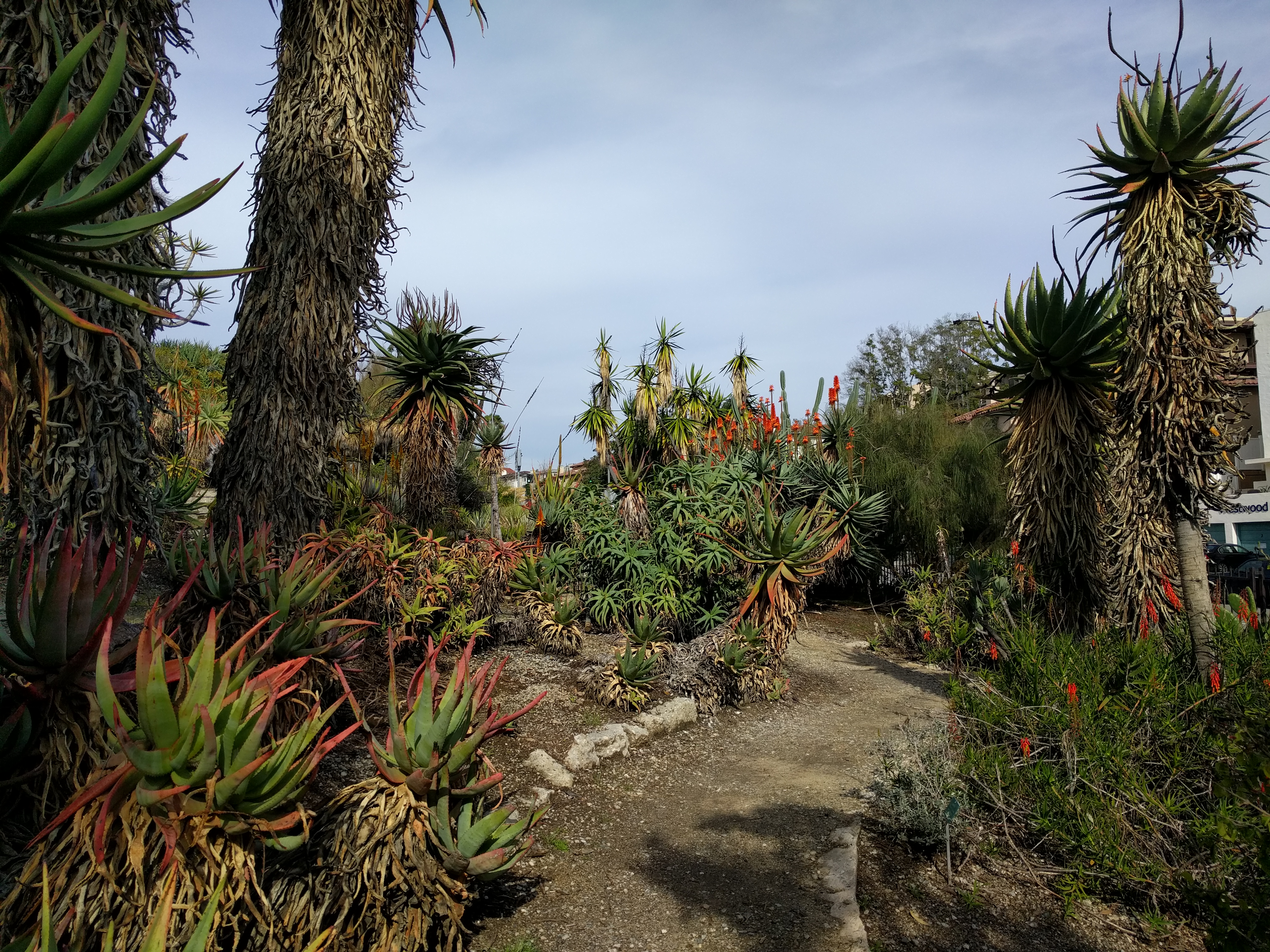|
Aloiampelos
''Aloiampelos'' (combination of 'Aloe' and 'ampelos'=vine or creeper), formerly ''Aloe'' ser. ''Macrifoliae'' (the climbing-aloes) is a genus of succulent plants in the subfamily Asphodeloideae, comprising seven species found in Southern Africa. They are typically multi-branched climbing or sprawling shrubs, with long spindly stems and a large woody base on the ground. These characteristics, as well as their soft, narrow, triangular leaves whose lower part ensheathes the stem, make them easy to distinguish. The genus is centered in the Eastern Cape, South Africa where they are also particularly common. A few rare species also occur in isolated pockets further west in the fynbos vegetation of the Western Cape. Species , the World Checklist of Selected Plant Families recognized the following species: The most common species in this group is probably ''Aloiampelos ciliaris'' which is relatively widespread in South Africa. It seems to have developed from a smaller, rarer, finely l ... [...More Info...] [...Related Items...] OR: [Wikipedia] [Google] [Baidu] |
Aloiampelos Striatula
''Aloiampelos striatula'', formerly ''Aloe striatula'', the hardy aloe or striped-stemmed aloe, is a sturdy succulent plant that naturally occurs on the summits of mountains along the south of the Karoo region of South Africa. Tough and hardy, with bright yellow flowers, it is also cultivated as a garden ornamental. Description ''Aloiampelos striatula'' is a robust rambling plant that can form a large shrub up to 2 m in height. It is closely related to Cape Town's ''Aloiampelos commixta'', but it is easily distinguished from it by the distinctive dark green stripes on the stems and leaf sheaths (its species name, ''striatula'', means "little stripes"), and by its thin, recurved leaves (which, like its flowers, are more densely packed). The leaves of ''Aloiampelos striatula'' are dark green and strongly recurved, with numerous small white teeth along their margins. The flowers are reddish-orange and appear densely on tall (40cm), un-branched, cone-shaped racemes throughout th ... [...More Info...] [...Related Items...] OR: [Wikipedia] [Google] [Baidu] |
Aloiampelos Gracilis
''Aloiampelos gracilis'', formerly ''Aloe gracilis'', the rocket aloe, is a succulent plant, endemic to dry thicket vegetation around the city of Port Elizabeth, South Africa. Its natural range lies just to the west of the related '' Aloiampelos ciliaris'', and it occurs in bushy fynbos and dry thickets, and clustered on rocky outcrops at all altitudes. Its range extends westwards into the Baviaanskloof mountains. Description Its thin stems grow tall and erect from its base on the ground, often reaching 2 m in length, and branching near the base. When it is not climbing on other vegetation or fences, the mass of semi-erect stems forms a shrubby bush. Its narrow, succulent leaves are dull-green with tiny, soft, white teeth along the margins, and it normally flowers from May, through to August. It can easily be distinguished from other species in the genus by its long (45 mm), thin, bright red flowers which appear on multi-branched racemes. Distribution ''Aloiampel ... [...More Info...] [...Related Items...] OR: [Wikipedia] [Google] [Baidu] |
Aloiampelos Commixta
''Aloiampelos commixta'' is a flowering plant in the Asphodelaceae family. It is commonly called Table Mountain aloe, and is a rare succulent plant that is endemic to the Cape Peninsula, South Africa. It naturally occurs only on the Table Mountain range, within the city of Cape Town. Description ''Aloiampelos commixta'' is a rambling, multi-stemmed plant, also known as the Peninsula rambling aloe. This "accent plant" rarely gets over tall, as its slender stems tend to sprawl along the ground and over rocks. ''Aloiampelos commixta'' flowers in late winter (August and September). A stout inflorescence shoots up, bearing reddish erect buds that open into dense, bright orange-yellow flowers. In its natural habitat in the fynbos vegetation of Table Mountain, its flowers are pollinated by sunbirds and honey bees. The leaves are thick, fleshy and evenly-spaced on a fine stem, with distinctive green stripes on the internodes. The leaves tend to be about 200 mm long, with tiny w ... [...More Info...] [...Related Items...] OR: [Wikipedia] [Google] [Baidu] |
Aloiampelos Tenuior
''Aloiampelos tenuior'', formerly ''Aloe tenuior'', the fence aloe, is a bushy, multi-branched succulent plant from the grasslands and thickets of the Eastern Cape, Kwazulu Natal and Mpumalanga, South Africa. Its preferred habitat is sandy soils in open country, unlike many of its relatives that favour thicket vegetation. It is one of the most profusely flowering of all aloes and their relatives. Description Locally, this plant is known as ''iKhalene'' in Xhosa, ''inTelezi'' in Fengu, and simply the fence aloe in English. The specific epithet ''tenuior'' means "very slender", and refers to the plant's stems. A medium-sized, bushy plant that forms clumps up to 3 m tall, with leaves tufted at the ends of branches. The leaves have a distinctive greyish-green colour and the leaf margins have tiny white teeth. These leaves are a traditional remedy for tapeworm. An unusually large, woody rootstock usually forms on the ground at the base of the plant. Like all species in the gen ... [...More Info...] [...Related Items...] OR: [Wikipedia] [Google] [Baidu] |
Aloiampelos Ciliaris
''Aloiampelos ciliaris'', formerly ''Aloe ciliaris'', the common climbing-aloe, is a thin, tough, rapidly growing succulent plant from South Africa. Appearance They can be differentiated from other ''Aloiampelos'' species by the way that the soft, white, hair-like teeth (''=ciliaris'') that grow along the margins of the leaves, extend all the way around the stem, at the base of the leaf. The fleshy leaves themselves are strongly recurved (helping to anchor the tall stems in dense thickets and assist the plant in climbing). The leaf sheaths are conspicuously striped green and white. These plants grow very quickly, producing long, thin, untidy stems that shoot upwards, producing large bright orange-red flowers once they reach the sun. If there are no nearby trees to act as host and support, it just forms a straggly shrub. The red flowers appear mostly from November to April. Distribution ''Aloiampelos ciliaris'' is naturally widespread in the coastal and thicket vegetation of ... [...More Info...] [...Related Items...] OR: [Wikipedia] [Google] [Baidu] |
Aloiampelos Ciliaris
''Aloiampelos ciliaris'', formerly ''Aloe ciliaris'', the common climbing-aloe, is a thin, tough, rapidly growing succulent plant from South Africa. Appearance They can be differentiated from other ''Aloiampelos'' species by the way that the soft, white, hair-like teeth (''=ciliaris'') that grow along the margins of the leaves, extend all the way around the stem, at the base of the leaf. The fleshy leaves themselves are strongly recurved (helping to anchor the tall stems in dense thickets and assist the plant in climbing). The leaf sheaths are conspicuously striped green and white. These plants grow very quickly, producing long, thin, untidy stems that shoot upwards, producing large bright orange-red flowers once they reach the sun. If there are no nearby trees to act as host and support, it just forms a straggly shrub. The red flowers appear mostly from November to April. Distribution ''Aloiampelos ciliaris'' is naturally widespread in the coastal and thicket vegetation of ... [...More Info...] [...Related Items...] OR: [Wikipedia] [Google] [Baidu] |
Aloiampelos Decumbens
''Aloiampelos decumbens'', formerly ''Aloe decumbens'', the Langeberg rambling-aloe, is a sprawling, succulent plant that is endemic to the fynbos vegetation of the Langeberg Mountains near Swellendam and Riversdale, Western Cape, Riversdale in the Western Cape, South Africa. Description This plant is decumbent - as its name suggests - and its long, thin branches sprawl for up to 1 meter along the ground and over the rocky outcrops where it grows. Its bright scarlet flowers appear on and off throughout the year, regardless of season, though usually in January and December. The individual flowers are brightly coloured and large like those of ''Aloiampelos ciliaris, A. ciliaris''. However they appear only very sparsely on the relatively small, thin inflorescence. They also share the long, slender perianth of ''Aloiampelos gracilis, A. gracilis'' - not ''A. ciliariss green-tinted and constricted opening to the perianth. Natural distribution ''Aloiampelos decumbens' ... [...More Info...] [...Related Items...] OR: [Wikipedia] [Google] [Baidu] |
Aloiampelos Juddii
''Aloiampelos juddii'', formerly ''Aloe juddii'', the Koudeberg aloe, is a newly discovered species that is native to a few rocky outcrops and a farm ("Farm 215"), near to Cape Agulhas in the Western Cape, South Africa. Description It is one of the few members of the tribe Aloeae that are indigenous to the fynbos vegetation type and it is closely related to the similarly rare ''Aloiampelos commixta'' of Table Mountain. Like this species, it is a slender, multi-stemmed succulent plant, with semi-erect stems that often sprawl along the ground and over rocks. In October and November it produces brilliant displays of bright red flowers, that are usually swiftly eaten by the tiny "Klipspringer" antelope that live in the area. It was named after the artist Eric Judd, who discovered it in 2004, and is known in Afrikaans as the ''"Baardskeerdersbosvuurpylaalwyn"''. Distribution and habitat ''Aloiampelos juddii'' has a small and restricted distribution. It occurs on rocky, south ... [...More Info...] [...Related Items...] OR: [Wikipedia] [Google] [Baidu] |
Asphodeloideae
Asphodeloideae is a subfamily of the monocot family Asphodelaceae in the order Asparagales. It has previously been treated as a separate family, Asphodelaceae ''sensu stricto''. The family Asphodelaceae has now been proposed to be a nomen conservandum, and the proposal has been recommended for ratification in 2017. In that case, Asphodelaceae will have priority over Xanthorrhoeaceae. This is reflected in the APG IV family lists. The subfamily name is derived from the generic name of the type genus, ''Asphodelus''. Members of group are native to Africa, central and western Europe, the Mediterranean basin, Central Asia and Australia, with one genus ('' Bulbinella'') having some of its species in New Zealand. The greatest diversity occurs in South Africa. The genera ''Aloe'', ''Asphodelus'', and ''Kniphofia'' are perhaps best known from their use in horticulture as ornamental plants. Description The Asphodeloideae are distinguished by a general presence of anthraquinones, s ... [...More Info...] [...Related Items...] OR: [Wikipedia] [Google] [Baidu] |
Aloe Ciliaris 11
''Aloe'' (; also written ''Aloë'') is a genus containing over 650 species of flowering succulent plants.WFO (2022): Aloe L. Published on the Internet;http://www.worldfloraonline.org/taxon/wfo-4000001341. Accessed on: 06 Nov 2022 The most widely known species is ''Aloe vera'', or "true aloe". It is called this because it is cultivated as the standard source for assorted pharmaceutical purposes. Other species, such as '' Aloe ferox'', are also cultivated or harvested from the wild for similar applications. The APG IV system (2016) places the genus in the family Asphodelaceae, subfamily Asphodeloideae. Within the subfamily it may be placed in the tribe Aloeae.Stevens, P.F. (2001 onwards).Asphodelaceae. ''Angiosperm Phylogeny Website''. Retrieved 2016-06-09. In the past, it has been assigned to the family Aloaceae (now included in the Asphodeloidae) or to a broadly circumscribed family Liliaceae (the lily family). The plant '' Agave americana'', which is sometimes calle ... [...More Info...] [...Related Items...] OR: [Wikipedia] [Google] [Baidu] |
Aloe Striatula 2
''Aloe'' (; also written ''Aloë'') is a genus containing over 650 species of flowering succulent plants.WFO (2022): Aloe L. Published on the Internet;http://www.worldfloraonline.org/taxon/wfo-4000001341. Accessed on: 06 Nov 2022 The most widely known species is ''Aloe vera'', or "true aloe". It is called this because it is cultivated as the standard source for assorted pharmaceutical purposes. Other species, such as '' Aloe ferox'', are also cultivated or harvested from the wild for similar applications. The APG IV system (2016) places the genus in the family Asphodelaceae, subfamily Asphodeloideae. Within the subfamily it may be placed in the tribe Aloeae.Stevens, P.F. (2001 onwards).Asphodelaceae. ''Angiosperm Phylogeny Website''. Retrieved 2016-06-09. In the past, it has been assigned to the family Aloaceae (now included in the Asphodeloidae) or to a broadly circumscribed family Liliaceae (the lily family). The plant '' Agave americana'', which is sometimes calle ... [...More Info...] [...Related Items...] OR: [Wikipedia] [Google] [Baidu] |
Aloe Commixta - Peninsula Rambling Aloe Of Table Mountain SA
''Aloe'' (; also written ''Aloë'') is a genus containing over 650 species of flowering succulent plants.WFO (2022): Aloe L. Published on the Internet;http://www.worldfloraonline.org/taxon/wfo-4000001341. Accessed on: 06 Nov 2022 The most widely known species is ''Aloe vera'', or "true aloe". It is called this because it is cultivated as the standard source for assorted pharmaceutical purposes. Other species, such as '' Aloe ferox'', are also cultivated or harvested from the wild for similar applications. The APG IV system (2016) places the genus in the family Asphodelaceae, subfamily Asphodeloideae. Within the subfamily it may be placed in the tribe Aloeae.Stevens, P.F. (2001 onwards).Asphodelaceae. ''Angiosperm Phylogeny Website''. Retrieved 2016-06-09. In the past, it has been assigned to the family Aloaceae (now included in the Asphodeloidae) or to a broadly circumscribed family Liliaceae (the lily family). The plant '' Agave americana'', which is sometimes calle ... [...More Info...] [...Related Items...] OR: [Wikipedia] [Google] [Baidu] |








